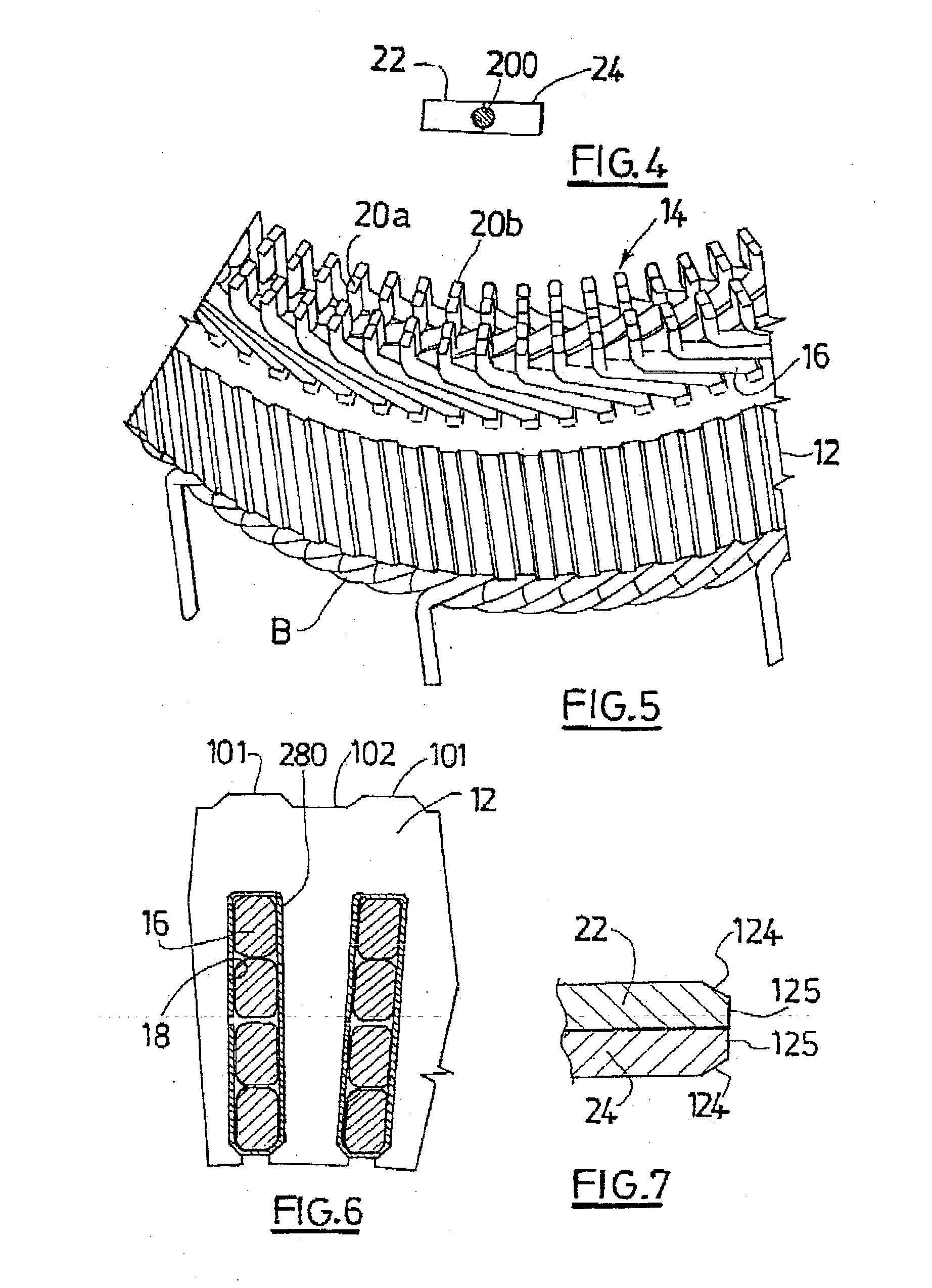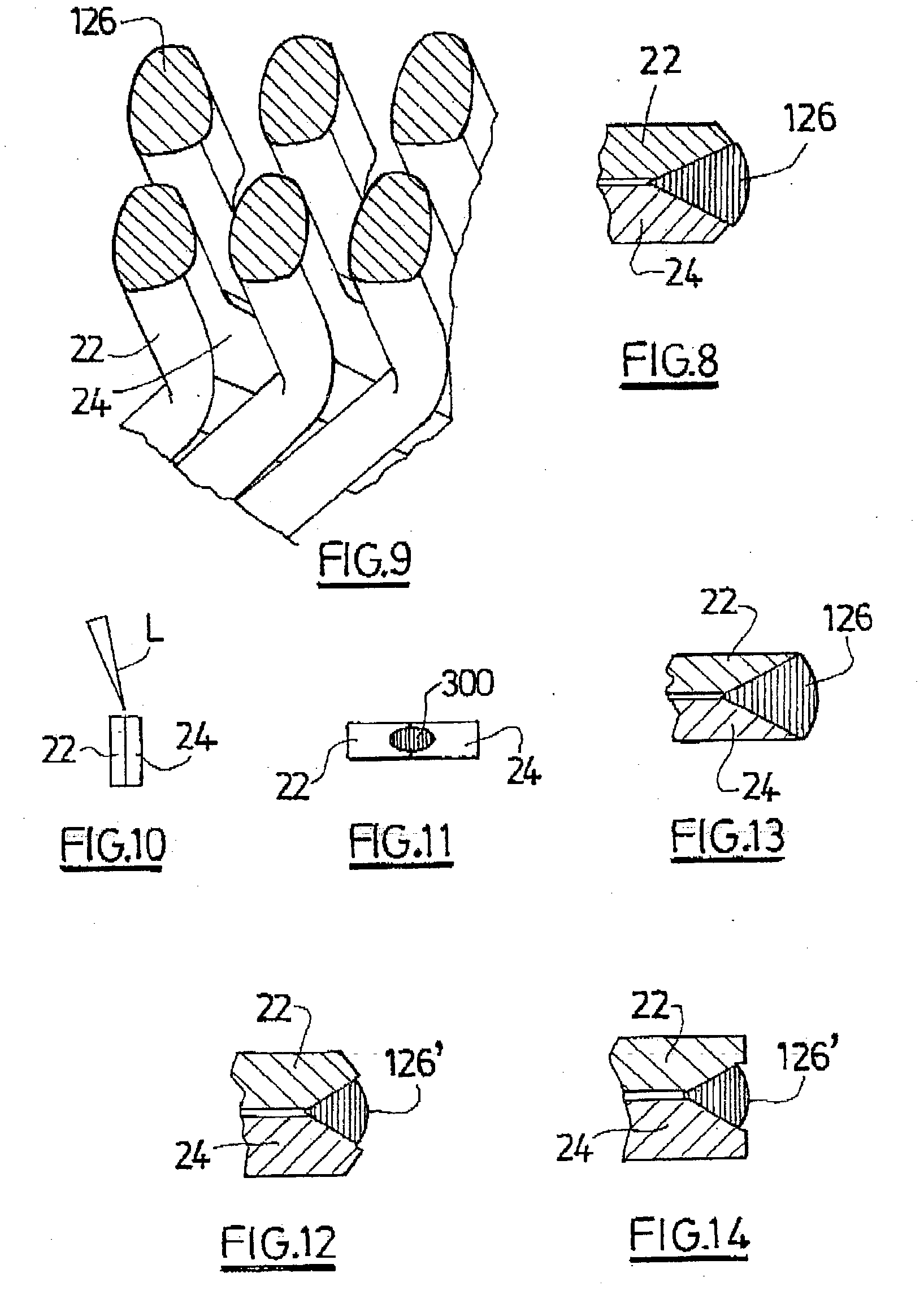Method for assembling conductive segments of a rotor winding or stator winding in a rotary electric machine
a technology of rotary electric machines and conductive segments, which is applied in the manufacture of stator/rotor bodies, soldering apparatus, magnetic bodies, etc., can solve the problems of increasing production costs, limiting the quantity of heat released outside welding zones, and difficult to envisage high-speed production lines, etc., to achieve rapid, simple and economical assembly, and reduce the cost of segments. , the effect of high quality
- Summary
- Abstract
- Description
- Claims
- Application Information
AI Technical Summary
Benefits of technology
Problems solved by technology
Method used
Image
Examples
Embodiment Construction
OF THE INVENTION
[0039] In the explanation which follows, the assembly of a stator winding of a motor-vehicle alternator will be described. However, the invention also applies, where appropriate, to the assembly of a rotor winding of an alternator and, in a general way, to the assembly of a rotor or a stator of a rotary electrical machine.
[0040] As is known, a conventional motor-vehicle alternator includes a rotor firmly fixed to a rotor shaft, the axial ends of which are supported in rotation by a hollow support designed to be mounted on a fixed part of the motor vehicle. On the inside, at its outer periphery, this support carries a stator, described below, surrounding the rotor. In this alternator, the rotor is shaped to form an inductor, while the stator is shaped to form an armature.
[0041] The support includes two parts, referred to respectively as a front bearing and a rear bearing. Each bearing features a central receptacle for mounting a ball bearing, in which the relevant end...
PUM
| Property | Measurement | Unit |
|---|---|---|
| Angle | aaaaa | aaaaa |
| Electrical conductor | aaaaa | aaaaa |
| aaaaa | aaaaa |
Abstract
Description
Claims
Application Information
 Login to View More
Login to View More - R&D
- Intellectual Property
- Life Sciences
- Materials
- Tech Scout
- Unparalleled Data Quality
- Higher Quality Content
- 60% Fewer Hallucinations
Browse by: Latest US Patents, China's latest patents, Technical Efficacy Thesaurus, Application Domain, Technology Topic, Popular Technical Reports.
© 2025 PatSnap. All rights reserved.Legal|Privacy policy|Modern Slavery Act Transparency Statement|Sitemap|About US| Contact US: help@patsnap.com



